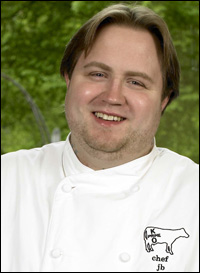Monday’s New York Times had a great opinion piece about My Farm’s Trevor Paque — the same guy recently profiled in the Times’ Style section. In fact, I had to look twice to make sure it was the same T. Paque because the two articles emphasized such different aspects of the urban CSA mission. Kim Severson, in the style piece, describes it thus:
Call them the lazy locavores — city dwellers who insist on eating food grown close to home but have no inclination to get their hands dirty. Mr. Paque is typical of a new breed of business owner serving their needs.
Secure · Tax deductible · Takes 45 SecondsSecure · Tax deductible · Takes 45 Seconds
She devotes so much time and script to the eco-chic aspect that I, like Tom Philpott, was initially put off by the idea of armchair gardening. But just like Tom, who later posted that he was “too hard” on it, I softened after reading Allison Arieff’s opinion piece. She writes:
Though some may see this as a “lazy locavore” trend — wherein couch potato clients, glass of biodynamic Syrah in hand, observe the hard labor of city farmers while lounging with their laptops — the urban agriculture movement seems to me to be slowly transcending its elitist associations. It is truly growing into something that is wholly about collaboration, community and connection to food, to neighbors, to land.
That’s certainly been my experience both in my yard, as neighbors and friends come by to help harvest (and to eat), and in my city. Earlier this month, my family spent a Saturday at San Francisco’s Civic Center Plaza, helping to plant a 10,000-square-foot Victory Garden sponsored by Slow Food Nation, a nonprofit organization that will be celebrating American food through art, music, lectures, tastings, school programs and the like over Labor Day Weekend.
To me, the most interesting thing about organizations like My Farm — a point that came across more clearly in Arieff’s article than in Severson’s — is that they aren’t just bringing food from nearby farms into the city; they are actually building new farms — miniature urban agro-scapes (okay, gardens) where once there was concrete or grass. Not only does this virtually eliminate the transportation costs (in dollars and in emissions), but it also brings the living plants that produce our food back into close proximity. Who knows? Perhaps after a few months of watching Paque carry in boxes of mustard greens and sweet tomatoes, some curious couch potatoes will be tempted to get a little dirty.



